Fly Fishing The Yucatan
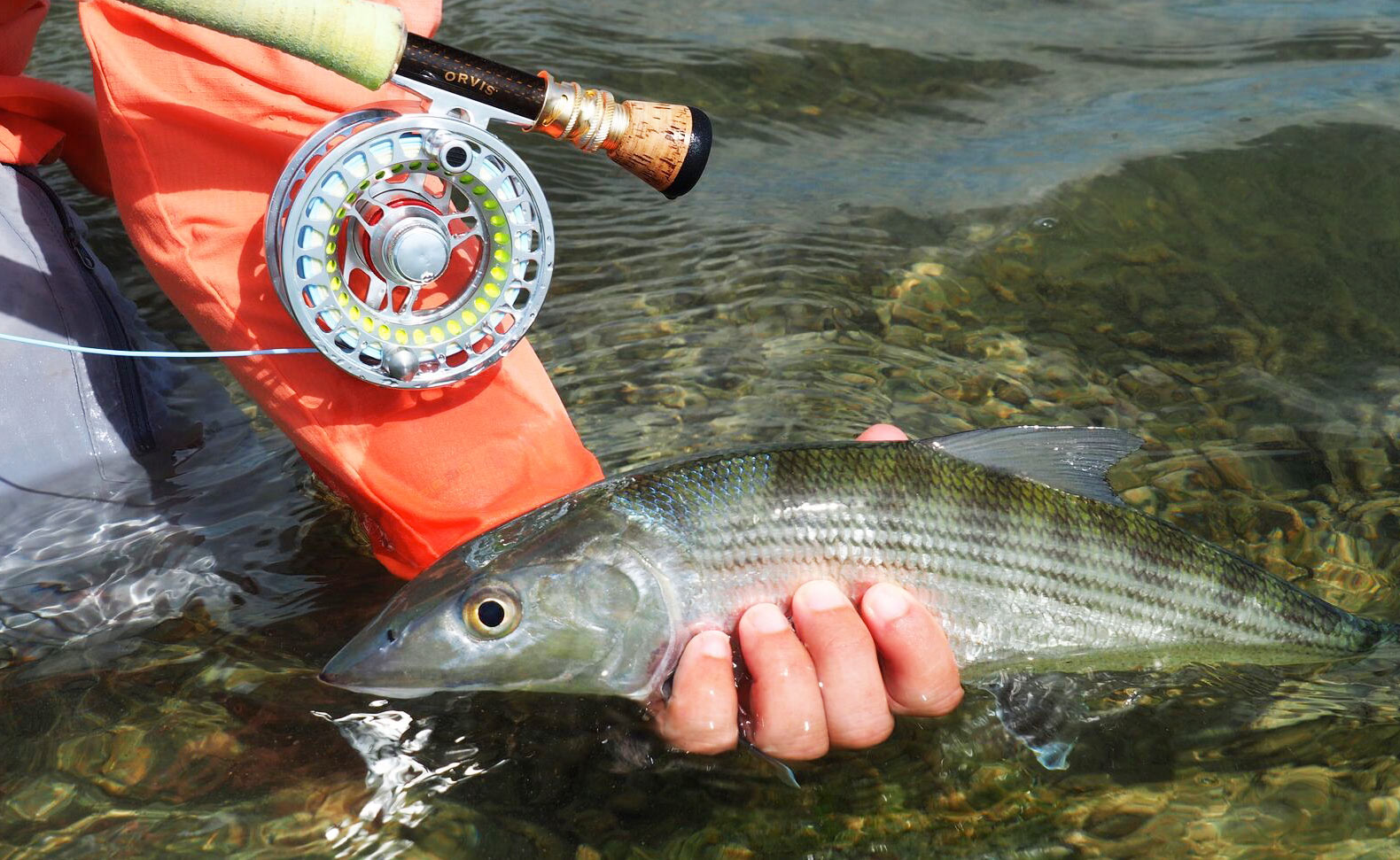
By Rod Hamilton
Standing beside our overheated car, an hour north of Cancun, my three-week fishing adventure to the Yucatan was off to a rocky start.
Weeks of preparation and planning had gone into this trip and with military precision three of us were going to explore as much of the Yucatan as possible. The end game being to collect the remaining material I required for my next book due out in December, Fly Fishing The Yucatan.
What I had failed to do was build into the itinerary eight hours on the side of the road in one hundred degree heat. Clearly an oversight since I have been fishing the Yucatan for more than ten years and should have expected that something “exciting” would happen.
Accompanied by co-authors Rhett Schober and Nick Denbow, the mission was to fish the Yucatan starting in the north at Rio Lagartos and over the next twenty one days, work our way south along the Caribbean coast eventually ending at the Belize border.
We could have outfitted a small fly shop with all the gear we had, including three inflatable SUP’s. Fly rods in hand we booked days with independent guides, lodges and fished on our own when we could. But secretly I had fallen in love with the romantic notion of catching all of the target species; tarpon, permit, bonefish, snook, jacks and barracuda from the platform of my SUP.
Dealing with the disabled car, we arrived in Rio Lagartos in the early morning hours. Grabbed a couple of hours sleep then dragged our sorry, tired butts down to the dock. Coffee in hand we met up with our guide, Isamael Navarro of The Rolling Silver Tarpon Club.
We stashed the gear into Isamael’s twenty-foot panga and made the three-minute run to the fishing grounds. Peering through the early morning mist, with the engine off we could hear and see tarpon to 35 pounds all around us. As with all trips, the travel and troubles from yesterday were now a distant memory. Rhett jumped on the SUP we had loaded, began casting a #4 Black Death and was soon into a leaping slab of silver. Rhett wouldn’t make it as a performer in Cirque du Soleil, but did manage to stay upright while fighting and landing the first tarpon of our trip.
Weary and bedraggled from our first day of fishing, the traveling band of misfits (that would be us) loaded all our gear into the back of a truck heading in the general direction (did I mention we didn’t have a car) of our next stop, Isla Holbox. Excitement was off the charts anticipating our time with one of Mexico’s most famous guides, Alejandro Vega Cruz of the Holbox Tarpon Club.
Alejandro and his family are fantastic hosts and his fishing expertise lived up to his reputation. We had a marvelous time working the flats sixty minutes south of his lodge, visiting the areas where he had fished and grew up as a child. We all caught fish under his watchful eye, but the highlight was handing him a fly rod and watching a master of our sport, cast. Poetry is what comes to mind as we watched 100 feet of fly line effortlessly leave the bottom of the boat.
Isla Holbox is an interesting place to visit and offers a laid back, relaxed vacation destination for those who want more than just a week of tarpon fishing. Beautiful, manicured, sandy beaches engulf a funky artist vibe that you can’t help but embrace as you poke around the island in your rented golf cart.
Next on the itinerary was Isla Blanca, located on the outskirts of Cancun. It barely gets mentioned when talking about flats fishing. Yet an hour from the dock your guide will be polling over some of the finest flats in the Caribbean. We were fortunate to get hooked up with Edwin Patron of Cancun Fly Fishing Express who picked us up at our Cancun hotel and drove us to his nicely outfitted panga.
Without the hyperbole of a typical fishing story, the chances are very good an average fisherman will have shots at tarpon, permit and bones. That day we hooked all three species and as a bit of a permit snob I can tell you we had something like twenty shots at the shyest of flats fish and landing a couple by days end. The real treasure of Isla Blanca is
Read More »Blackwaters
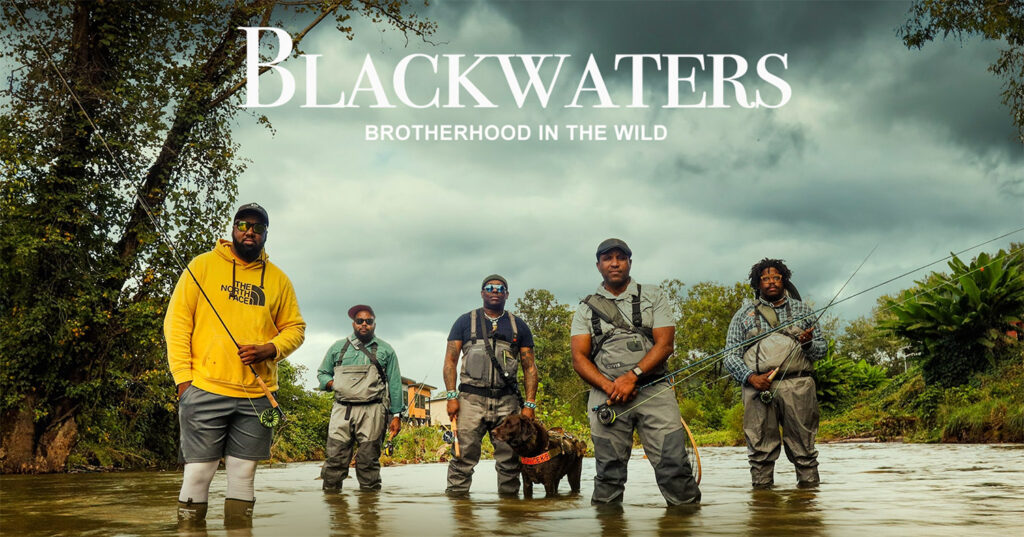
Blackwaters isn’t really a film about fly fishing. My buddy Chad Brown called the other day to tell me about the latest project he’s been involved with. When you get that call from Chad, you know it’s going to be interesting, and its going to be a conversation worth having. The project is a film called Blackwaters. Fly fishing being the excuse for five black men to go on a camp trip to the wilds of Alaska. If you’re not black, and most of our readers are not, you may not be aware that the wilderness does not always feel like a safe place for Black Americans. I feel sure that choice was intentional. The stage is set for a substantive conversation on the topic of being male and being black in 2023. The fishing is secondary. In the end it is, in fact, a conversation worth having. The Premier of Blackwaters will be Aug 26, 1-5pm at Billy Frank Jr Conference Center 721 NW Ninth Ave Second floor Portland, OR 97209 You can find information and other showings at https://blackwatersfilm.com
Read More »Get the Most Out Of Your Fly Reel
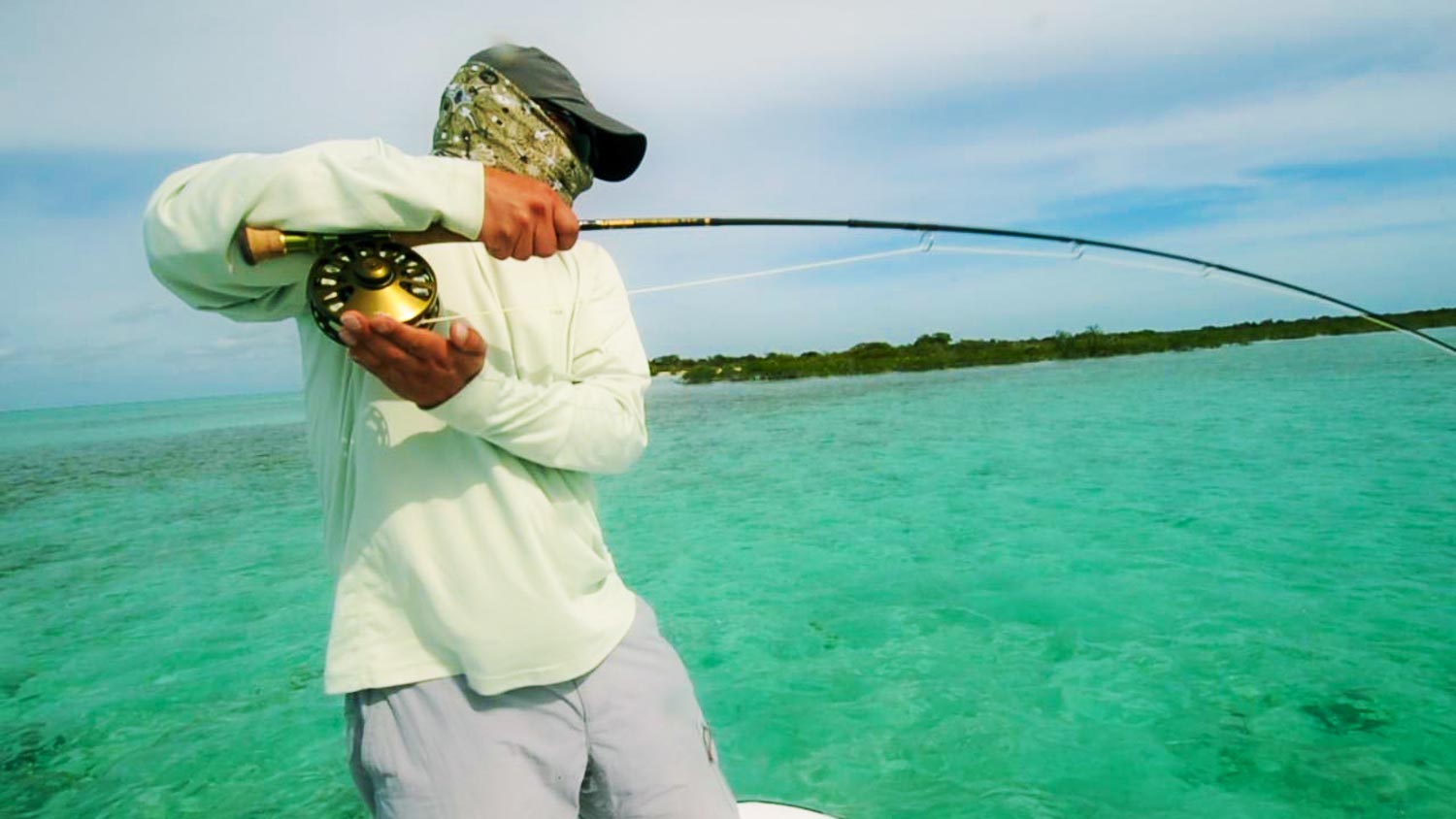
Odds are, you paid good money for that fly reel, don’t let it go to waste.
One of the most common fish-fighting mistakes anglers make is not making good use of the reel. I see this most commonly in anglers who are making the transition from freshwater to salt, but it exists in all types of fly fishing. Well, maybe not tenkara.
Most modern fly reels have drag systems, which are both powerful and precise. In the old days, fly reel drag did little more than help prevent backlash, but today’s reels are effective fish-fighting machines designed to land fish efficiently. Once you have a feel for using a fly reel, you’ll find that you land more fish and land them quicker.
There are basically two things you need to know about fighting fish with a fly reel: how tight to set the drag and how to fight a fish with the given drag setting. Before I dive into the technical stuff, I will touch on a few basics for those who are completely new to the sport. If you are an advanced angler, skim over the next three paragraphs.
Unlike spinning reels, fly reels are direct drive reels. This means that in order for the spool to spin under drag, your winding hand must let go of the reel. I know, that’s dead obvious, but getting the winding hand off the reel quickly when a fish starts to run is a skill new anglers struggle with.
Your fly reel should have two types of line. Your fly line, the weight of which is matched to your rod. This is the line you cast to deliver the fly. The reel should also have backing. Usually Dacron, the backing is attached to the spool and then to the back end of the fly line. This line is there for fighting big fish which make long runs. It is not as strong as your fly line, so be careful not to put too much pressure on a fish when the backing is out or you may lose your fly line. This is important with large species like tarpon. Backing will also cut like a knife when under tension, so don’t touch it during the fight.
Once the reel is mounted to the rod, the line should come off the front of the reel and make a straight line to the first guide, without touching the frame. When you strip line off the reel in preparation for casting, always pull the line out along the rod. Never strip it off the reel with the line in contact with the frame of the reel. This will damage your line and cause it to twist and tangle.
Setting the drag
There are a couple of important things to consider when setting your drag. The most important is
Read More »The In-Law’s Bass Pond
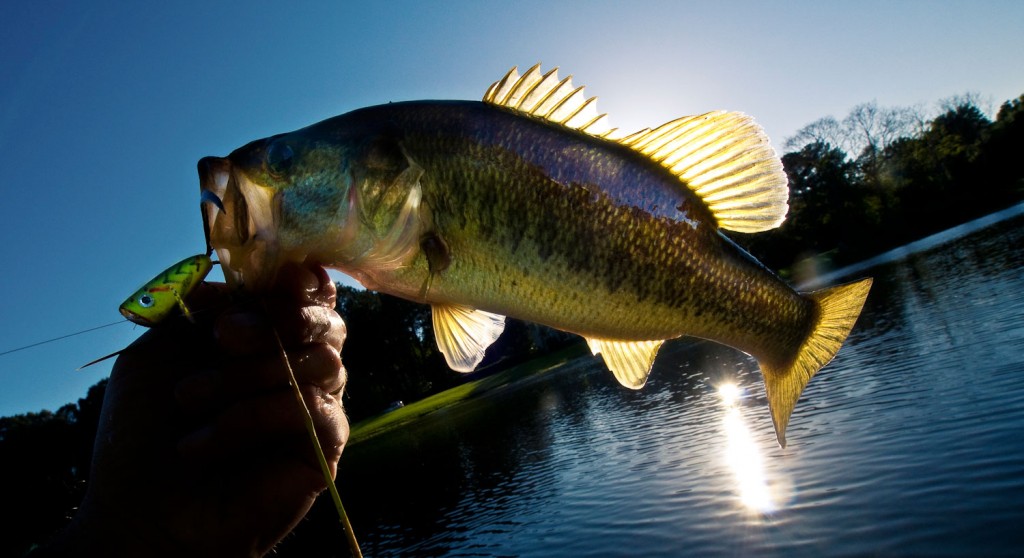
“The pond was full of those great lily pads, and I guess that’s where the problem started.”
I guess I should be happy, but I’m not.
Ever since my in-laws moved to South Carolina the compulsory visits have had a silver lining. I discovered a little bass pond just down the road. It’s a sort of neighborhood open space and I’ve seen a few folks fish it but very few. Maybe an acre total, you can fish about sixty percent of it from the bank if you’re a good caster.
I am, SO not a bass fisherman. My brother is quite good at it so I’m well aware of my shortcomings. I have a lot of respect for the guys who can go out on those big lakes and find the channels and structure, temperature changes and whatever else causes bass to find a happy home in, what looks to me, like featureless water. I’ve never been motivated to learn all of that. In part because bass just don’t blow my skirt up.
They’re a cool fish and all, I’m just so in love with the brightly colored trout that bass don’t get a lot of my attention. I also freely admit that I have no interest at all in going seventy miles per hour in a boat. It scares the shit out of me and I bear no shame for that. I find it aesthetically more pleasing to walk to my fish and it’s easier on my nerves. That said, a bass pond is just my speed.
It’s been great, at Christmas, Thanksgiving or Easter, to just sneak off for and hour or two at the end of the day and deposit a little of my stress into a fly line. There is just something terribly satisfying about watching the chug-chug of a bass popper get violently interrupted by a falling bowling ball. It’s not the most challenging fishing but, that’s kind of the point.
This little pond in the South Carolina low country is just beautiful. Enough trees to find some shade but not so many that casting is impossible. A healthy frog population so the popper fishing is great. I’ve had fish bust through the lily pads to eat a popper sitting on top. The pond was full of those great lily pads, and I guess that’s where the problem started.
I don’t know if the alligator was attracted to the lily pads but he certainly liked the bass that hung out around them. Whatever the reason, this gator happily took up residence in the pond and it caused a minor hysteria among the neighbors, my in-laws included. Apparently
Read More »Drift Boat & Car Renting Tips Abroad

When you’re traveling abroad on a fly fishing trip that you’ve meticulously planned out for months in advance, the last thing you want to deal with is equipment problems. That was exactly the case Louis and I ran into several years ago heading out to Wyoming for a week long fly fishing trip with our good friend Bruce Wayne, a.k.a “Batman”.
Read More »8 Elements of Fly Design to Follow for Imitating Trout Food Sources
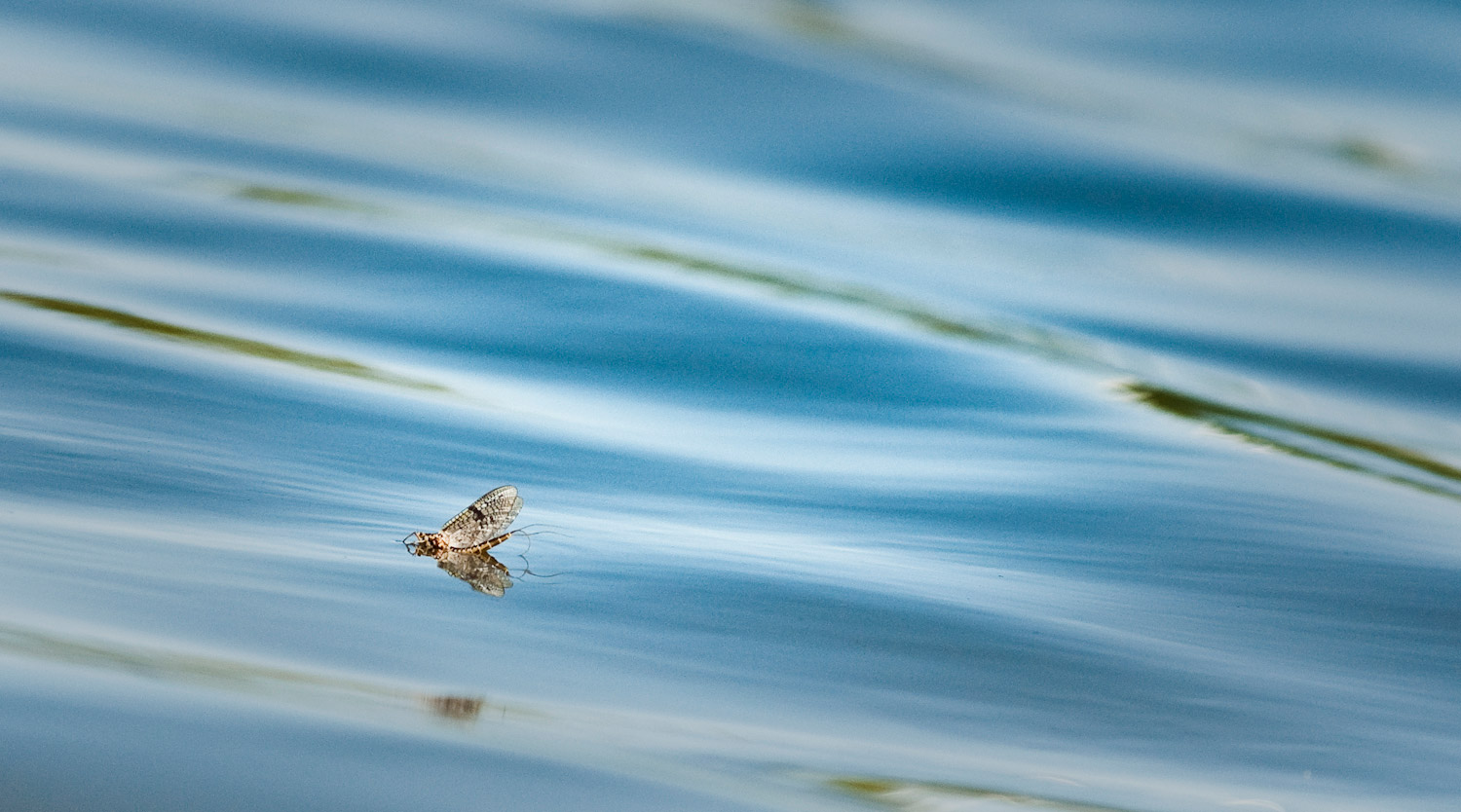
When tying fly patterns, it’s very important that you try your best to incorporate several different elements of fly design to increase their effectiveness. No one knows with complete certainty what order or priority trout rank each element of a food source or fly pattern, but most anglers agree that the value or ranking of the elements often change depending on how long a trout has been selectively feeding on a specific food source, at what frequency the specific food source is being eaten, and how diverse or consistent a trout’s diet is at the present moment. The order of the elements that I will talk about in know way ranks the importance of the elements. Instead, fly tiers should look at them together as a whole, and try to include as many as possible or as a check list of the features a fly pattern should have when completed. Doing so, they should find there fly patterns more effective on the water for fooling and catching trout. In this post, I will specifically talk about eight different elements of fly design that fly tiers should pay close attention to when tying fly patterns at the vise.
Read More »Strip Set, Dammit!
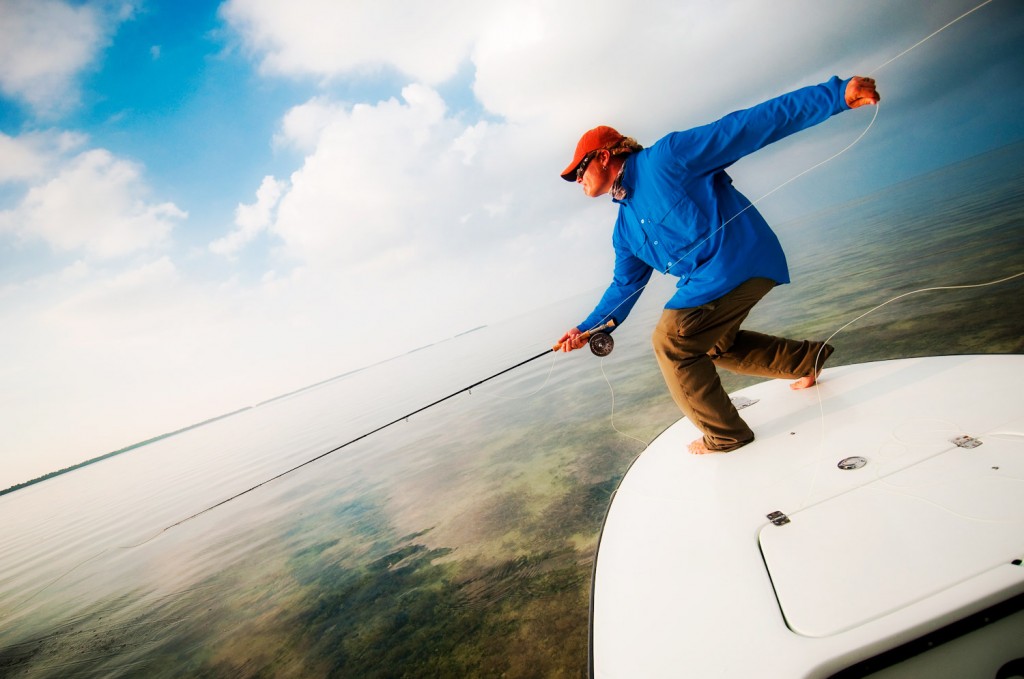
Quite likely the most frustrating thing for an angler who is new to salt water is the strip set.
A dedicated freshwater angler will have thousands of hours of muscle memory to overcome. I did it myself time after time. I’d see a fish eat and my arm, without permission from my brain, would raise the rod tip and off would swim a happy bonefish. Then I would hear my friend Josie Sands, from the platform, “da ain’t no trout in the Bahamas Louis”. To be fair, as frustrating as this is for the angler it may be worse on the guide. He has to deal with this almost every day.
I wish I had a silver bullet to offer that would solve this problem for you instantly, but I don’t. It just takes focus and practice. However here are a few suggestions that may help. First, don’t beat yourself up. Every guy who stands on that bow has gone through this. You are not a moron, you just feel like one. Self loathing will not help.
Second, stay focused. There is a lot to think about and when you spot fish things happen quickly. Try this. When a fish turns and chases your fly,
Read More »The Green River Below Flaming Gorge Is Where They Coined The Word Epic
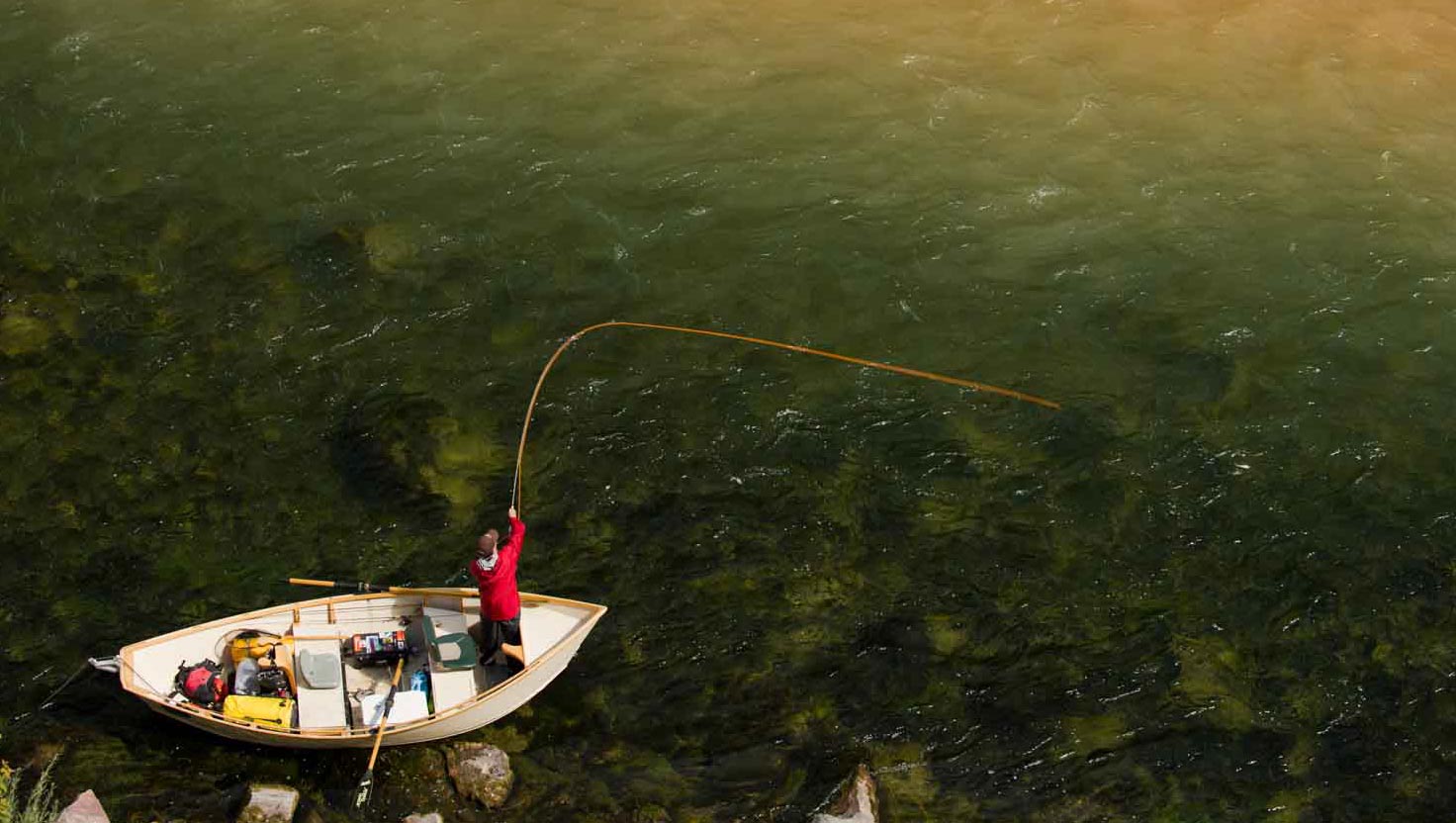
If you have never fished the Green River below Flaming Gorge, its time to check it out.
Located in the northeast corner of Utah, the Green River is one of the premier tailwaters in the country. The river flows through a beautiful red rock canyon with towering cliffs suspended high above the water and with close to 13,000 fish per mile its hard to have a bad day. The Green is best appreciated from a boat, but wade fisherman can also equally enjoy the river from the shore. There are three main sections of this tailwater. The A, B and C sections are separated by mere miles, but can fish very different depending on the time of year and Ill go through each section independently.
THE A SECTION.
At 7 miles in length this is a true tailwater, with consistent flows and gin clear cold water, bug life is a little limited in its diversity but the fish are always active. Midges, Baetis and Caddis are the primary insects but due to the arid climate, there are always a plethora of terrestrials in the summer. The Baetis hatches in the spring is both world famous and frustrating at the same time.
The river can be blanketed with bugs and it looks like its boiling with all the fish on the surface, but the fish are ultra picky. Going smaller with your tippet is always a good bet and switching from a dun to a cripple can sometimes be the ticket. About the second to third week of May we start seeing Cicadas. In my opinion, this is the best fishing in the country. 50 fish days can be the norm and 100 fish days happen from time to time. This is dry fly fishing at its pinnacle. Big bugs and big angry fish smack these monster terrestrials with a recklessness that will make your heart race. Having said that, cold weather and rain will put them down so look for multiple day of hot, sunny weather.
your planning on floating this section on your own, there are a few things to keep in mind. There is not a lot of whitewater, but there are two rapids in particular
Streamers for Small Streams
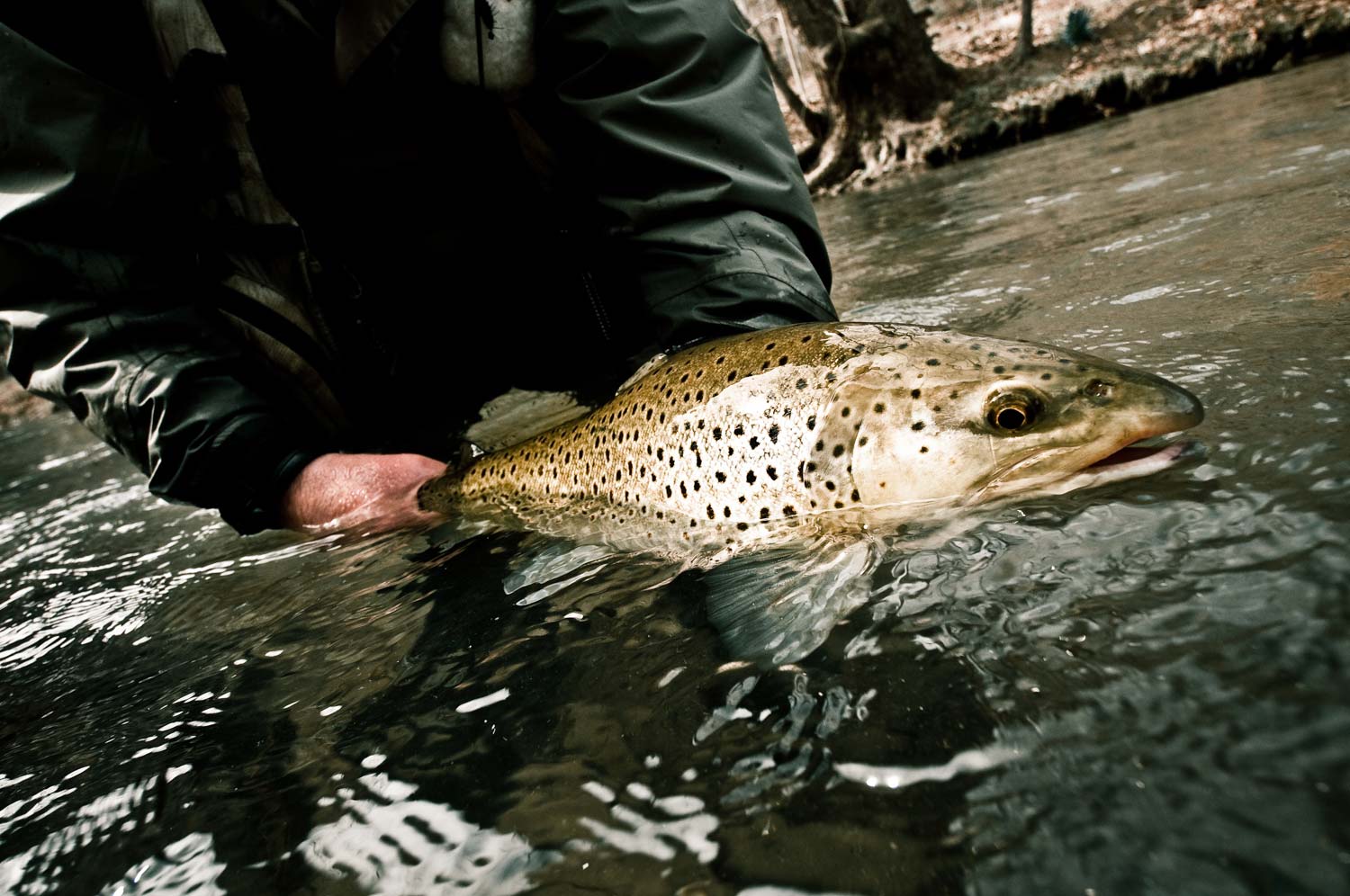
By Jason Tucker
Small stream fishing often conjures to mind light rods and lines, small dry flies, an easy, pleasant day on the creek casting to small trout.
It indeed can be that, and most of my small stream fishing consists of this. But I firmly believe every small stream out there holds bigger fish, and more of them, than you think. One of the best ways to find out is with streamers.
Researchers have shown that as brown trout reach the twenty-inch mark they become largely piscivorous (fish eating). This means if you want to catch them, you need to throw streamers.
Streamer fishing has changed a lot since the days of hair wing flies and Grey Ghosts. If you have fly fished for any amount of time you have heard of or read “Modern Streamers for Trophy Trout” by Kelly Galloup and Bob Linsenman. Streamer enthusiasts today pound the banks with articulated monsters measuring five to as much as twelve inches long. This is great for bigger rivers but a bit of overkill for small streams. You’ll want to scale your efforts to the water you’re fishing. Still, streamer fishing small streams can be a very enjoyable way to fish them, and a great way to find out the true potential of the stream.
MY STREAMER BOX FOR SMALL STREAMS CONTAINS THE FOLLOWING:
Muddler Minnow size 4-10
Cone Head Madonna/Zuddler size 4 in barred yellow, olive, black and white
Black Dace size 6-10
Mickey Finn size 6-10
Zoo Cougars size 6 in yellow and white
As I said I try to scale my streamers to the water I’m fishing. It would be rare for me to tie on a size two streamer. Most of the forage fish in a stream are going to be closer to the size of traditional hair-wing streamers like Mickey Finns and black-nosed dace. In a lot of small stream situations, I prefer the stealthier presentation of hair-wing streamers to the loud splat of bigger, heavier streamers advocated in “Modern Streamers”. Trout in small streams are well aware of everything going on in the water. That splat can be what sends them on the run.
BY FAR MY FAVORITE STREAMER FOR SMALL STREAMS IS A MUDDLER MINNOW.
It is a great sculpin imitator, and all the streams I fish both North and South are chock full of them. Trout eat them with abandon. Even big fish will roll out for a size eight Muddler. If you want an enjoyable day seeing and catching lots of fish, tie on a Muddler minnow and go to town. I find that original versions work better than marabou or conehead versions. Sculpins hug the bottom normally, and when trout see a muddler swimming up high, they think something is wrong, triggering a response. That’s my theory and I’m sticking with it.
My second choice is the conehead Madonna, which to my untrained eye is nearly identical to a Zuddler. It’s another sculpin stand-in; a great pattern with lots of action and a good profile. It has some “plop” to it, but not so much that it will spook fish in normal or high-water situations, and it’s a great pattern for finding bigger fish in the system.
After that I like the Mickey Finn and black-nosed dace. They are tried and true classic patterns that brook trout especially go for. Black-nosed dace are forage minnows, and very common in small streams. The yellow and red of Mickey Finns is also very effective. I always try to keep these in my box.
Lastly, if I suspect that water holds bigger fish, I’ll tie on a zoo cougar. Their disadvantage is that they’ll float even when saturated. Because of that you need a sink-tip, or a split shot a foot above it. For that to work you need enough room in the water to allow it to sink, work it, and hopefully get a reaction. If the stream is too small you may not even get the streamer down before it’s out of the hole. But on the right piece of small stream you may see a fish following that scares you.
There are dozens of other great streamer patterns out there, from marabou streamers to various flash minnows to woolly bugger variations. If you have a favorite, take it out and give it a try. These are just my go-to patterns, and I try to keep things simple.
PRESENTATION
Fishing all flies revolves around three words- presentation, presentation, and presentation. It’s no less true with streamers, though
Read More »Carp Czar
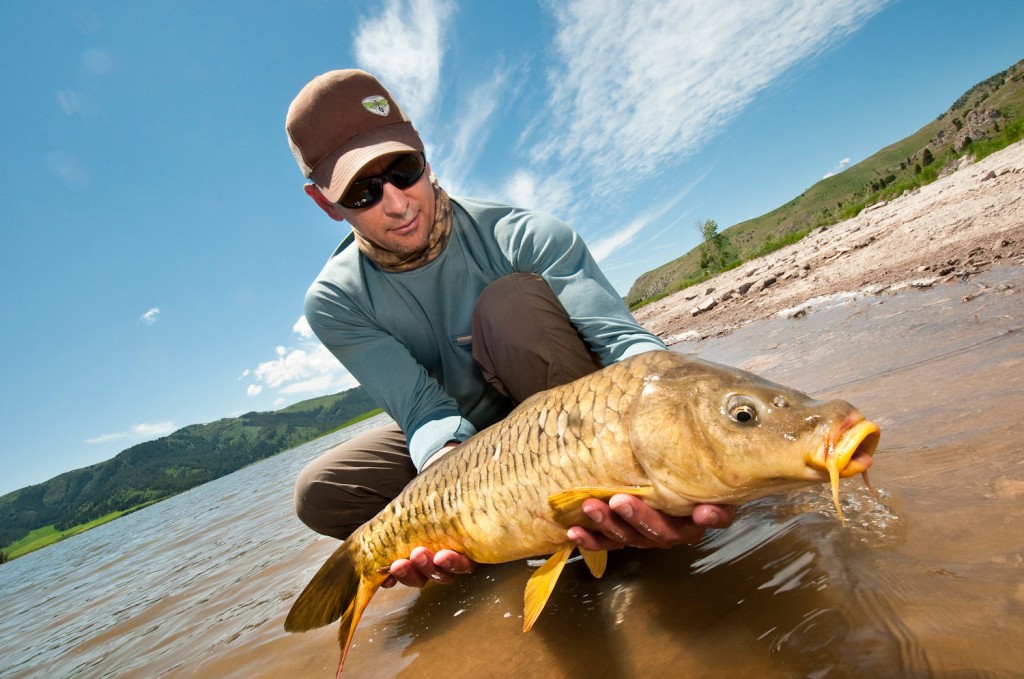
I recently had the great pleasure of spending a day carp fishing with my friend Bruce Smithhamer. It was every bit as challenging as promised. The fish were gearing up for the spawn and were lock jawed. We would have gone fish-less if not for Bruce’s encyclopedic knowledge of the species. We changed locations and tactics several times and eventually got into fish.
Carp, especially Mirror Carp, are a remarkable fish. Their color and scale patterns are reminiscent of classical Japanese painting. Their eye sight is excellent and there hearing quite acute. They are even able to communicate danger to other carp by releasing a pheromone in to the water. Their behavior is unpredictable except that they will refuse more often than eat.
Perhaps their most remarkable quality is their ability to completely ruin a good trout fisherman. I’ve seen several guys go down this road and few come back. They started out
Read More »